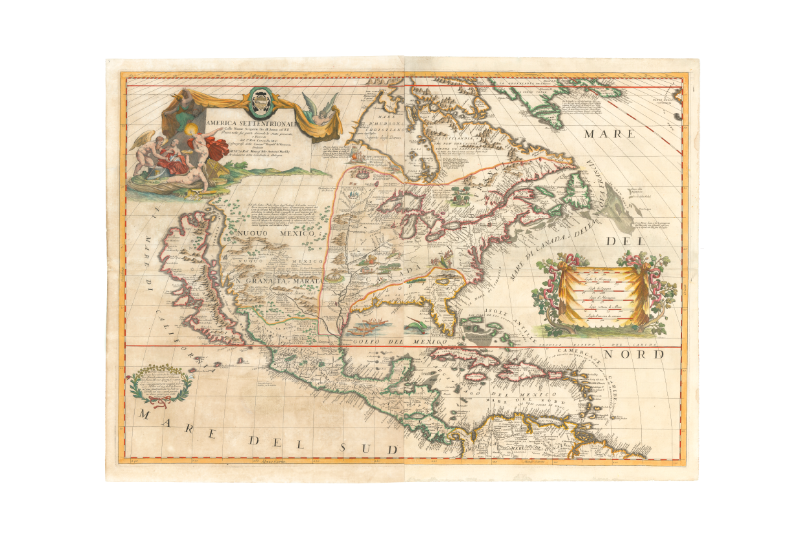Why You Should Choose Authentic Antique Maps for Your Collection
Antique maps are more than just outdated pieces of paper with lines and labels. They offer a deep connection to history, art, and culture that modern maps simply cannot replicate. Whether you’re a seasoned collector or just curious about the past, choosing authentic antique maps can provide you with an enriching and rewarding experience.
The Unique Allure of Antique Maps
A Glimpse into History
Antique maps capture moments in time, reflecting the world as it was known centuries ago. They offer insights into how early explorers navigated uncharted territories, revealing their understanding (or sometimes, misunderstanding) of geography. Each map serves as a historical document, showing the evolution of our world over time.
Artistic Appeal of Antique Maps
Maps from earlier centuries were often hand-drawn and decorated with incredible detail. Many include beautiful illustrations of ships, sea creatures, and elaborate compass roses. The intricate artistry and craftsmanship give antique maps a visual appeal that goes beyond their practical use.
What Defines an Authentic Antique Map?
Age and Provenance
To be considered truly authentic, a map must be old enough to be classified as an antique—usually over 100 years old. However, its provenance, or documented history of ownership, plays a significant role in its authenticity. The provenance can reveal where the map came from, who made it, and how it has been preserved.
Originality and Condition
An authentic antique map should be an original piece, not a reproduction. Its condition is also crucial, with well-preserved maps generally commanding higher value. However, some wear and tear, such as slight fading or discoloration, can add character to the map, emphasizing its age and history.
The Historical Significance of Antique Maps
How Maps Shaped Exploration
Antique maps were invaluable tools for explorers and navigators. They guided expeditions across seas and lands, enabling the discovery of new continents and territories. The maps of early cartographers contributed to the great Age of Exploration, transforming global trade routes and cultures.
Reflection of Cultural Perspectives
Old maps also reflect the worldview and cultural biases of their creators. For example, many European maps from the 16th and 17th centuries emphasize Europe at the center of the world, a reflection of Eurocentric views during the colonial era.
The Artistic and Aesthetic Value of Antique Maps
Handmade Craftsmanship
One of the most captivating aspects of antique maps is the level of craftsmanship involved in their creation. Unlike today’s maps, which are mass-produced using digital technology, antique maps were drawn and engraved by hand, making each one unique.
Beautiful Imperfections
Because antique maps were hand-drawn, no two maps are exactly the same. These imperfections—whether a slightly crooked line or a hand-colored border—add to the charm and appeal of owning an original piece of history.
Why Invest in Antique Maps?
Growing Market Demand
In recent years, the demand for antique maps has increased, making them a valuable investment for collectors and history enthusiasts alike. As interest grows, so too does the value of rare and well-preserved maps, especially those with significant historical or geographical importance.
Rarity and Uniqueness
Antique maps are finite; no more will ever be made. This rarity, combined with their unique qualities, makes them sought-after collectibles. Each map has its own story and identity, unlike mass-produced items.
How to Verify the Authenticity of an Antique Map
Paper and Ink Analysis
The materials used to create an antique map can help determine its authenticity. By analyzing the paper and ink, experts can estimate the map’s age and verify if it was made using historical printing methods, such as woodblock printing or copperplate engraving.
Watermarks and Other Indicators
Many authentic antique maps contain watermarks, which can be a key indicator of their origin. These subtle marks, often visible when held up to light, can provide clues about the map’s paper mill and production date.
Caring for Your Antique Map
Handling and Display Tips
Antique maps should be handled with care, as they are delicate. Always wash your hands or wear gloves when handling them, and avoid folding or creasing the paper. When displaying, ensure the map is framed with UV-protective glass to prevent fading from sunlight exposure.
Preservation Techniques
Proper storage is essential to preserving the value and longevity of antique maps. Keep them in a cool, dry environment away from direct sunlight. Consider storing maps flat in acid-free folders or mounted behind glass.
Where to Find Authentic Antique Maps
Reputable Dealers and Auctions
The best way to ensure you’re purchasing an authentic antique map is to buy from a reputable dealer or participate in auctions that specialize in antique cartography. These dealers often provide documentation of authenticity and provenance.
Online Marketplaces
While online marketplaces can offer a wide selection of antique maps, it’s important to be cautious. Always verify the seller’s credentials and ask for any documentation or expert appraisals before making a purchase.
The Emotional Connection to Antique Maps
Maps as Family Heirlooms
Antique maps often become treasured family heirlooms, passed down through generations. Their personal histories, combined with their historical significance, make them emotionally valuable to collectors.
Personal Exploration of History
Owning an antique map is like owning a piece of the past. It allows you to explore history in a tangible way, offering a deeper connection to the world as it once was.
Collecting Antique Maps as a Hobby
The Thrill of the Hunt
Collecting antique maps can be an exhilarating hobby. Whether you’re searching through auctions, antique stores, or flea markets, the thrill of discovering a rare map is part of the joy of collecting.
Building a Collection
Over time, collectors often curate impressive collections of maps, focusing on specific regions, time periods, or mapmakers. Building a collection allows for a greater understanding of cartographic history and personal achievement.
The Educational Value of Antique Maps
Teaching History Through Maps
Maps are valuable tools for teaching history. They offer a visual representation of historical events, territorial changes, and cultural evolution, making them an engaging resource for educators.
Understanding Geographic Evolution
Studying antique maps provides insight into how our understanding of the world has evolved over centuries. From inaccurate depictions of continents to the discovery of new lands, these maps show the progress of human knowledge.
Displaying Antique Maps in Modern Spaces
Creating a Timeless Aesthetic
Antique maps blend well with modern décor, adding a timeless and sophisticated touch to any room. Whether in a study, living room, or office, they serve as conversation pieces while enhancing the aesthetic appeal.
Enhancing Interior Design
With their intricate details and historical charm, antique maps can be framed and used as focal points in interior design. They bring a sense of elegance and history to modern spaces.
Common Misconceptions About Antique Maps
Myths About Map Value
One common misconception is that all old maps are valuable. In reality, a map’s value depends on several factors, including its rarity, condition, historical significance, and demand in the market.
Differentiating Between Reproductions and Originals
It’s also important to note the difference between antique maps and reproductions. While reproductions may look similar, they lack the authenticity, historical value, and craftsmanship of original antique maps.
Conclusion:
Choosing authentic antique maps offers a unique opportunity to own a piece of history. Their historical significance, artistic beauty, and investment potential make them a valuable addition to any collection. Whether you’re drawn to their craftsmanship or their connection to the past, antique maps provide a tangible link to the world as it once was.
FAQs
How do I know if a map is authentic?
Authenticity can be verified through age, provenance, paper and ink analysis, and expert evaluations.
Are antique maps a good investment?
Yes, the market demand for rare and well-preserved antique maps has been growing, making them a valuable investment.
What’s the best way to store antique maps?
Store antique maps in a cool, dry environment away from direct sunlight, and consider using acid-free materials for preservation.
Can I frame my antique map?
Yes, framing is a great way to display antique maps, but use UV-protective glass to prevent fading.
Where can I buy antique maps?
You can buy antique maps from reputable dealers, auctions, and verified online marketplaces.
Go to Check – https://neatlinemaps.com/






